Anne Frank is certainly the most famous dead woman of Amsterdam. No irreverence intended. Anne Frank might not even be considered a woman at her young age, having died in early 1945 at Bergen-Belsen concentration camp before her sixteenth birthday, but I have to think her life experiences of an early age qualify her.
Anne Frank House is the museum near Westerkerk, Amsterdam where the Frank family spent a little over two years in hiding from July 1942 to August 1944, when their hiding place was reported to the Gestapo by an informant.
Westerkerk (1620-31), Amsterdam
Many days the line to enter the Anne Frank House wraps around the block along Prinsengracht canal and beside Westerkerk to the Keizersgracht canal. Ever since visiting the Anne Frank House more than a decade ago, my thoughts tend to drift toward her attic rooms facing Westerkerk when I hear the clock tower bells chime every quarter hour. I wonder if Anne heard the same bell chimes from the Westerkerk clock tower in her years of hiding? Obviously, she would have heard Westerkerk’s bells from the family’s nearby attic rooms. I simply don’t know if the clock tower bells chimed during those war years.
Saskia Rembrandt Was Here in Oude Kerk
The second most famous dead woman in Amsterdam, at least to international tourists, is Saskia Rembrandt. One of my objectives this week in Amsterdam was to find Saskia’s grave in the Oude Kerk.
Oude Kerk Amsterdam
Oude Kerk Amsterdam is the oldest building and church in Amsterdam, founded more than 800 years ago in 1213 and consecrated in 1306. Much of the current building dates to the 14th to 16th centuries. The Oude Kerk is located in De Wallen, Amsterdam’s main Red Light District. There are literally prostitute windows in some of the buildings across the street from Oude Kerk.
Oude Kerk oak beams date back as old as 1390 from Estonia. The church architects used shipbuilding techniques to create a barrel vaulted roof similar to the hull of a ship. The church has the largest roof surface area of any church in Europe.
One of the fascinating features of the church are the more than 2,500 gravestones covering the Oude Kerk floor. Over centuries, more than 12,000 bodies were buried under the church floors. Every few years the bodies were moved to a lower layer and new bodies placed in graves. It is said the church had quite an odor.
There is no odor in Oude Kerk now. All the bodies were disinterred and moved to other burial places. The graves are now filled with sand.
I was looking for Saskia, the most visited grave in the Oude Kerk, and there are some 2,500 grave markers on the floor.
Some markers are plain and some are ornate.
Most of the interior of Oude Kerk is simply adorned. The church changed during the 16th century from a Catholic Church to Dutch Calvinist during the 1578 Reformation. The interior used to be many small churches and was described as seeming more like a colorful fair inside with all the different guilds and congregations.
Eventually I located Saskia Rembrandt’s grave marker.
No. 29 K – Saskia 19 June, 1642
Two types of graves in Oude Kerk are church graves and family graves. Church graves, marked with a K, were cheaper. Every few years the bones were disinterred, and buried deeper as new bodies were buried on top. It was not until 1866 that Oude Kerk followed the Amsterdam ban on unhygienic church burials.
Rembrandt van Rijn 1606-1669
Rembrandt was born 1606 in Leiden, Netherlands and trained in art there.
Rembrandt was born near this location in Leiden. The house was demolished in the early 20th century. There is now only a marker and art sculpture in Leiden to commemorate his birthplace.
In 1631 Rembrandt relocated to Amsterdam to practice his portrait art. He lived with an art dealer and in 1634 married the art dealer’s cousin, Saskia van Uylenburgh.
Rembrandt was successful as a painter in Amsterdam. He and Saskia were able to purchase their own home in 1639, in what was becoming an upscale Jewish neighborhood in the area near Oude Kerk.
Rembrandt House Museum seen with the historic Amsterdam house Rembrandt and Saskia moved into in 1639 on right. While Rembrandt earned a fine income that should have been adequate to pay off his house, his lifestyle was one of constant debt.
Many of Rembrandt’s paintings used Saskia as his model. Saskia had four children with Rembrandt. Three died soon after birth and only their last child Titus, born in 1641, lived to adulthood. Saskia died in 1642, probably from tuberculosis.
Saskia left an inheritance for Rembrandt and the care of Titus, however, marriage would invalidate his claim to her money. Rembrandt eventually made his maid his mistress and had a child with her, but never remarried. Still, he was bankrupt by 1656, and to settle his debts, sold most of his paintings and eventually his house. Rembrandt died a poor man October 4, 1669 and was buried in an unmarked grave in Westerkerk.
The fact that there is no grave marker for Rembrandt probably makes Saskia’s grave marker in Oude Kerk a kind of pilgrimage and place of tribute to the world’s best known Dutch artist.
Rembrandt self-portrait in Rijksmuseum, Amsterdam.
Most people probably have an image of Rembrandt as the old master painter. These are Rembrandt’s most commonly seen self-portraits. My favorite Rembrandt selfie is his self-portrait as a young man of 22 years. I don’t know if this painting is one currently being exhibited at the Rijksmuseum.



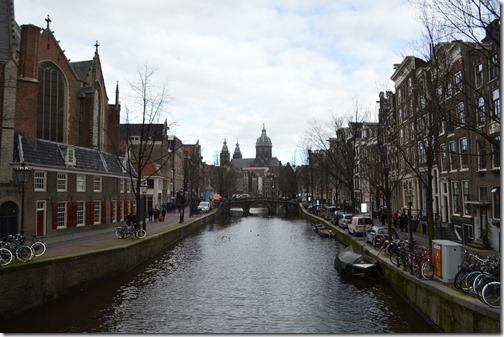

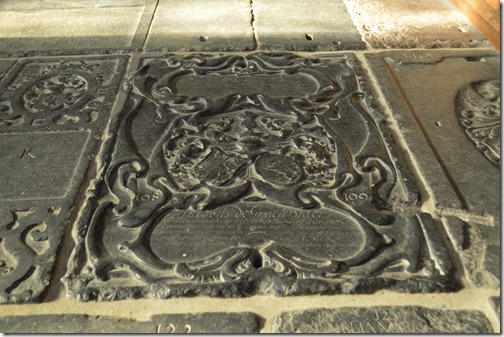
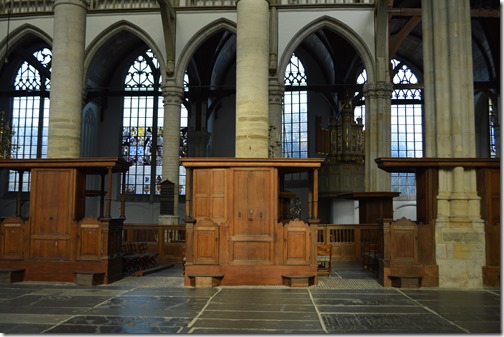
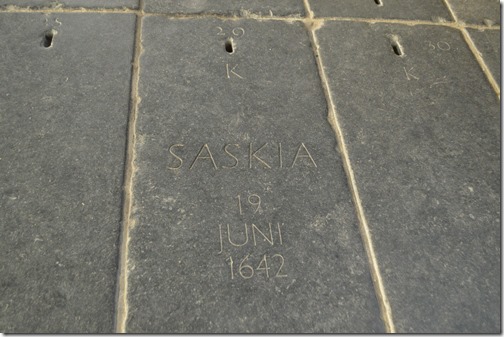

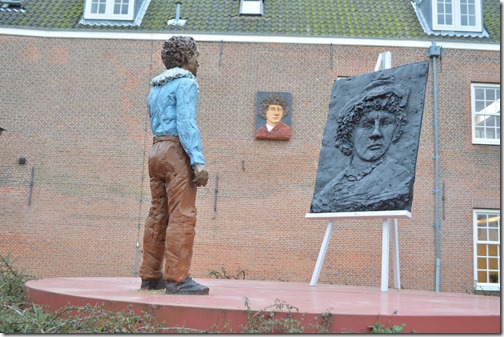
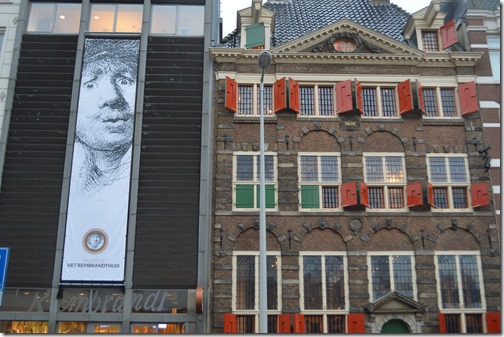
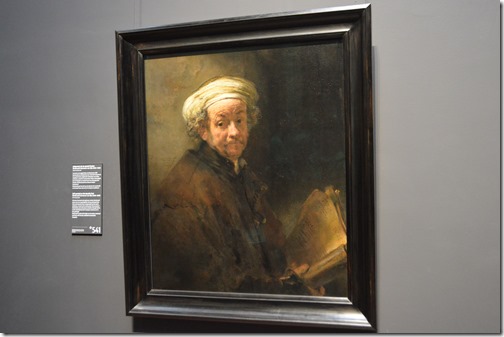
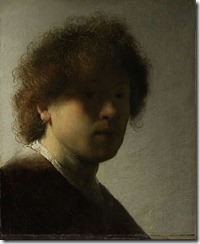
1 Comment
Comments are closed.